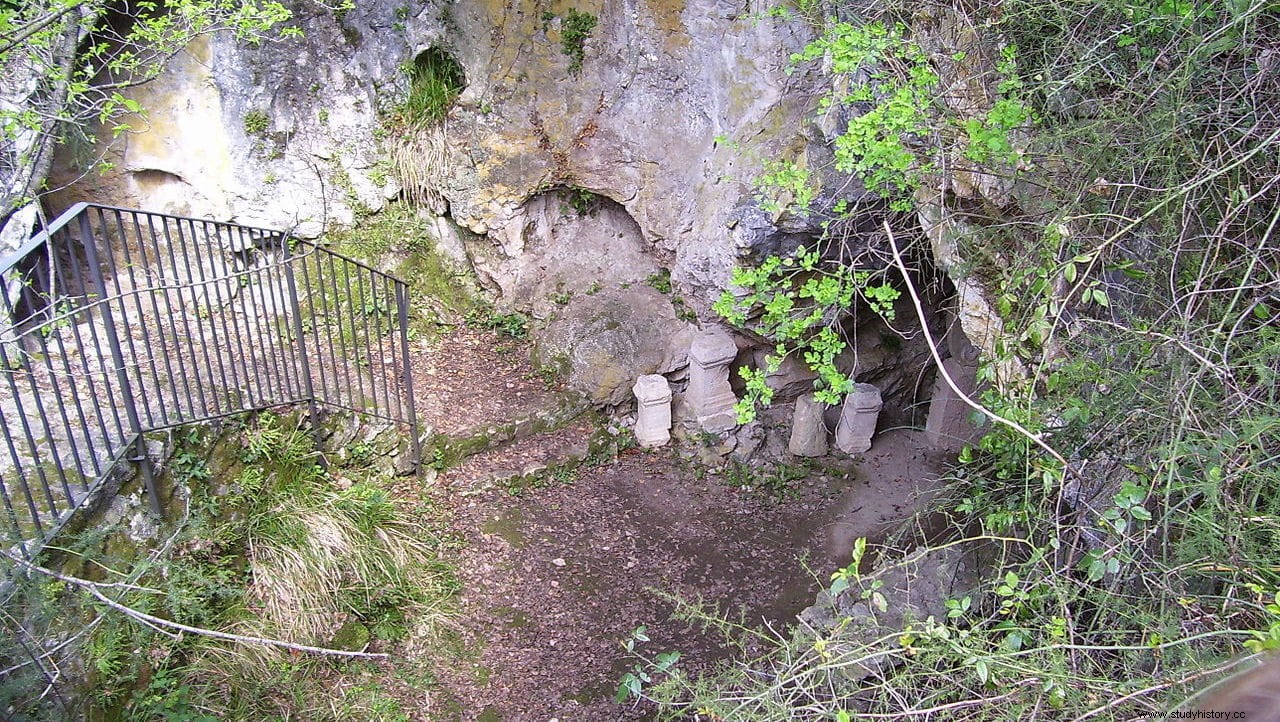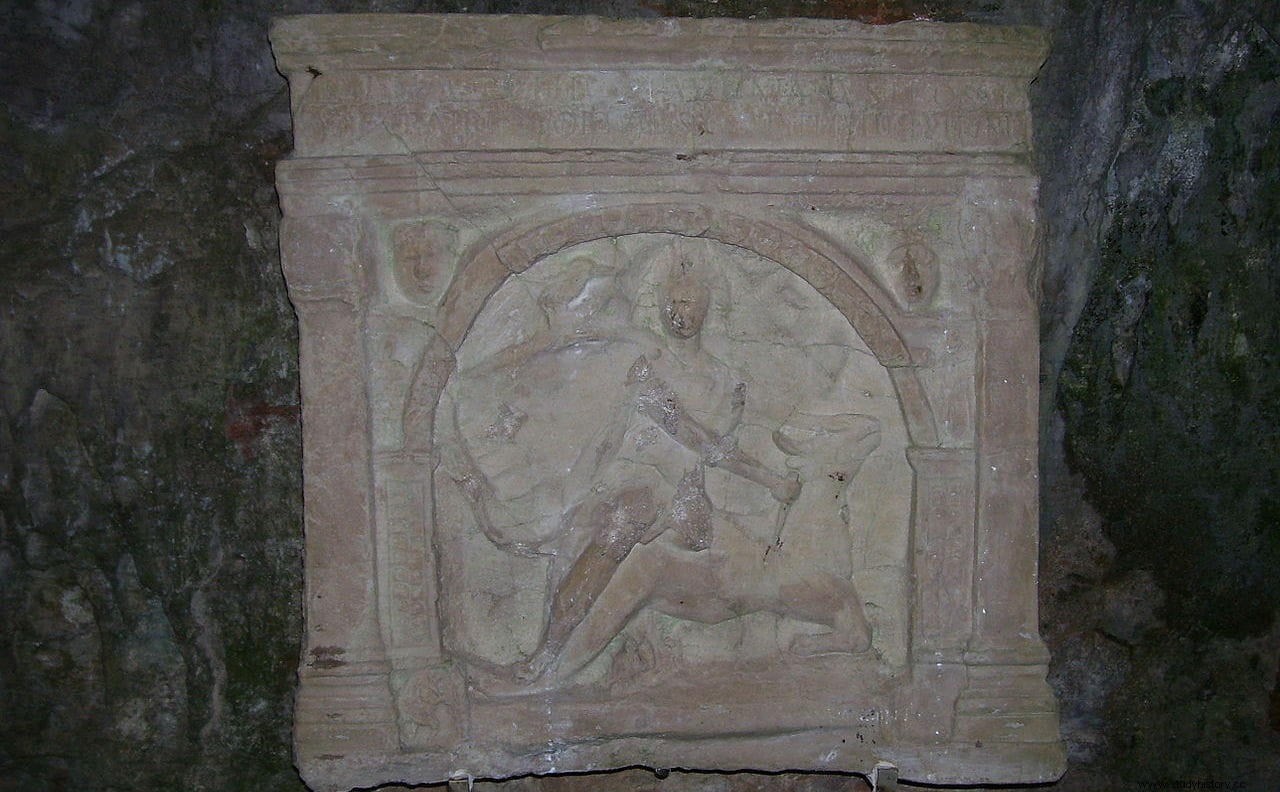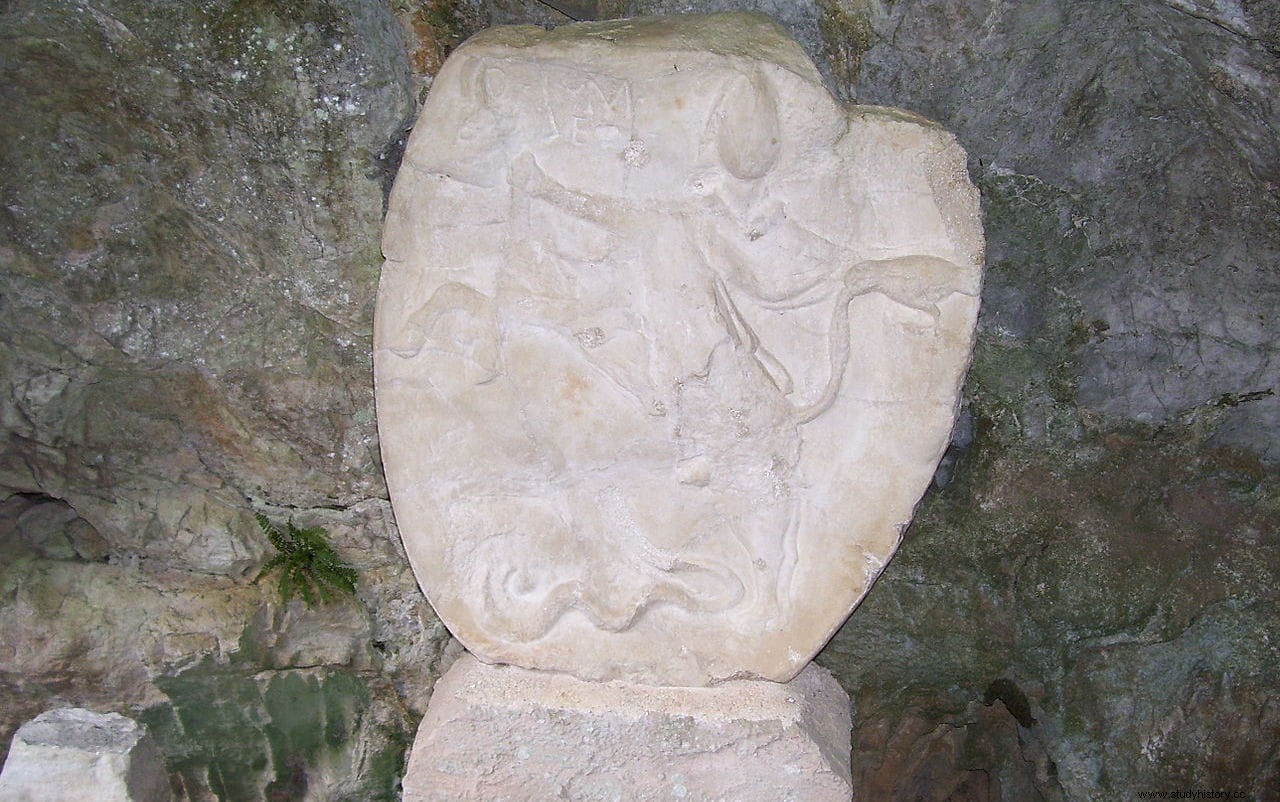From the end of the 1st century B.C. The cult of Mithras spread throughout the Roman Empire, a god of Indo-Persian origin whose faithful were organized around some mysteries secrets that required honesty, purity and courage as main qualities. For this reason, it was especially popular among soldiers and, until the 4th century AD, it competed with Christianity to prevail as the main religion of the empire.
Although inspired by the Persian cult of the Zoroastrian divinity of the same name, the Greco-Roman Mithras was a syncretic divinity initially identified with Helios, the Sun god. His worshipers had a system of seven degrees of initiation and celebrated meals community rituals.
They met in underground temples called mitreans , many of which have survived (it is estimated that in the city of Rome alone there were about 600). Some have been found under other constructions, such as the one found in the excavations of the Basilica of San Clemente de Letrán in Rome.

However, no mithraeum located in a natural cave in Europe is known, except for the one in Duino, a town located in the Italian province of Trieste, on the border with Slovenia. It was discovered by speleologists in 1963 to the north-northwest of the town, near the sources of the Timavo River (water had an important purifying role in Mithraism), where a Roman settlement, the Fons Timavi<, has also been found. /em> .
The cave has a wide entrance that allows the lighting of the interior, in the center of which there are two benches and an altar carved from limestone blocks, next to a stele on the wall in which the god Mithra is represented with the bull, the tauroctony which is one of the usual iconographies of this divinity.
There is a dedication on it:D(eo) I(nvicto) M (Mithrae) AV (lus) TULLIVS PAVMNIANVS PRO SAL (ute) ET FRATER SVOR (um) TVLLI SECUNDI ET TVLLI SEVERINI (To the invincible god Mitra Tulio Paumniano offers for his salvation and that of his brothers Tulio Segundo and Tulio Severino ).

Inside the cave, some 400 ancient coins dating from the 2nd to 4th centuries AD, oil lamps and numerous ceramic vessels, fragments of amphorae, roof tiles and hollow tiles were found.
The temple is estimated to have been built in the second half of the 1st century AD. and was in use until the 4th century AD, around 391 AD. when the edicts of Theodosius prohibited pagan cults. At that time the altars and stelae were broken, and the cave was filled with rubble, just as cavers would find it in 1963.

Therefore, what we can see today is a reconstruction (quite faithful, according to experts) of the original temple. Originally, the cover of the cave was more closed, since during the debris removal work it was necessary to widen it for safety. And inside there was a small building with a gabled tiled roof, which covered the altar and the two pews.
During the excavations carried out in the cave in 1976, archaeologists found, under the Roman layer, remains of an earlier prehistoric site (from the Iron Age). Hollow-bottomed vessels decorated with incisions, pottery shards, as well as rhinoceros bones were found.

Once the excavations were completed, the mithraeum was reconstructed with the original altar and benches, and with rubbings of the stelae and tombstones. It can be visited on Saturdays between 10 and 12 in the morning.
